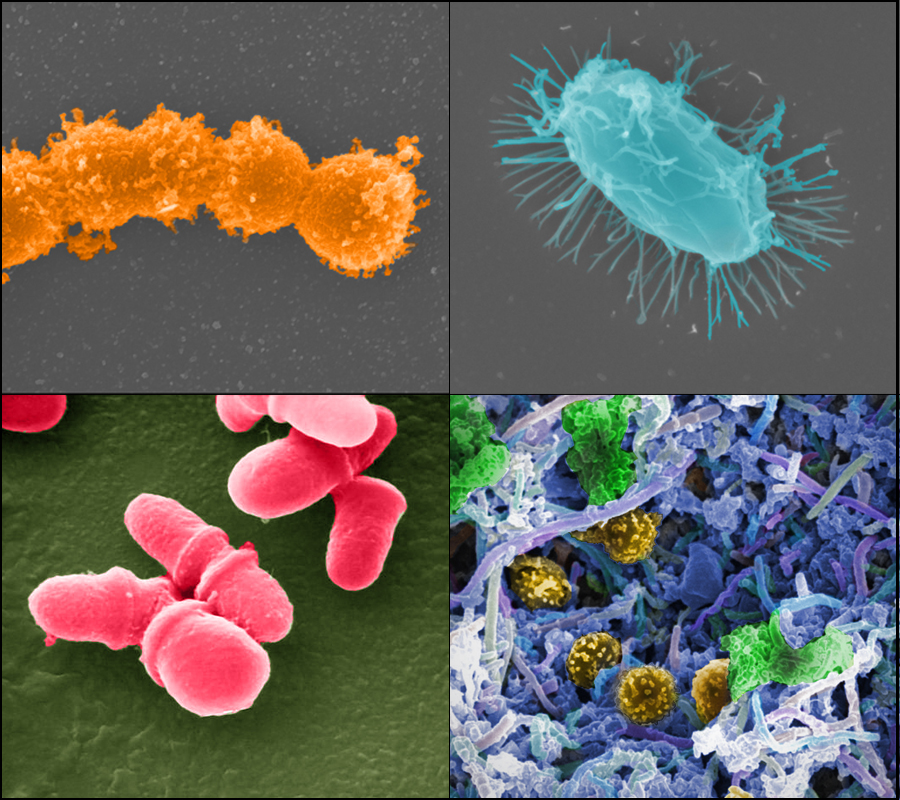The advent of the gut microbiome as a field of research has driven new efforts to harness microbes for treating and preventing disease. Known as microbiome therapeutics, these medications come in many forms, such as live biotherapeutics (LBPs). Whether through a group of different microbes or a single microbe, the possibilities of developing these microbes to treat all sorts of diseases are endless.
The same can be said for collaborations in this space. Over the past decade, we have seen immense work from Europe and North America into microbiome therapeutics. These efforts have led to two microbiome therapeutics becoming FDA-approved in the past two years: Seres Therapeutics’s Vowst and Ferring Pharmaceuticals’s Rebyota. Nevertheless, the work on LBPs and microbiome therapeutics doesn’t stop there. Seeing the potential that microbiome therapeutics bring for treating disease, other pharmaceutical companies are eager to develop therapeutics of their own. The continent of Asia is no exception.
As one born in Indonesia, I have been eager to advance the latest biomedical development news in Asia. Now, I am delighted to share with you an effort being spearheaded by Dr. Jun Terauchi, Chief Scientific Officer at Metagen Therapeutics, Inc. and Steering Committee Chair at Japan Microbiome Consortium (JMBC). After starting his career at Takeda Pharmaceuticals in 1991 and working there for over 20 years, he moved to Ono Pharmaceuticals in 2014. After spending about 8 years focusing on drug discovery efforts at Ono, he then moved to Metagen Therapeutics, a clinical-stage microbiome startup in Japan. During his career at Ono, he contributed to the foundation of the JMBC. After the initiation of the JMBC, he served as the chair of the JMBC Steering Committee which he has continued to this day. With his vast experience in the Japanese pharmaceutical industry and microbiome research, he is the ideal person to speak about the LBP industry in Japan and Asia. Read on to learn more about the work he does to bring people together and advance LBP research and development.
PN: Please begin by telling me what JMBC is and the role it plays in advancing LBP research and development.
JT: A group of healthcare-related Japanese R&D companies came together to form JMBC in April 2017. We started out as a pre-competitive consortium to achieve goals that we shared across the healthcare industry in Japan and the world beyond. At JMBC’s initial stages, we discussed the kinds of diseases and topics we could pursue and the ways we could promote the healthcare industry as a whole by setting up common goals as the industry sectors to overcome hurdles of industrialization of microbiome research. Amid those discussions, we narrowed our focus to microbiome research and development. When we got there, we decided to specialize in microbiome research for its wide-ranging benefits to human health. For one, we knew that changes in the human microbiome can promote health. We saw the potential of microbiome therapeutics for treating patients throughout the body, from the gut to the skin. The other thing was that I realized I could leverage my expertise in small molecule research to help develop microbiome-based therapeutics. Both these things compelled us to begin JMBC and propel LBP research forward.
PN: I would love to hear more about your transition from small molecule research into the microbiome realm. How did you make the change?
JT: For over thirty years, I have been developing small molecules to treat a range of various diseases. It was always a challenge to identify new targets for developing new drugs due to the high risk of drug development failure and other factors. From there, I believed that we needed big data to compare patient groups with healthy controls and better characterize and develop new drugs to treat various diseases. On top of that, we are just starting to recognize that the human microbiome can generate many potential targets for new drugs based on understanding the relationship between disease and microbiome, including recent findings of the tumor microbiome. With a background in small molecule research, I was just beginning to appreciate the power of the microbiome to modulate disease outcomes and severity. All that put together was why I pivoted to microbiome therapeutics when I came across the possibilities of generating big data with microbiome research.
PN: I can see how your research background helped you make the transition into microbiome therapeutics, but I believe Japan has a deep history of pharmaceutical development as well, yes?
JT: That is correct. I believe that Japanese companies are very good at small molecule discovery, which was where I began my research career. We have developed a wide array of research tools to discover small molecules that modulate disease outcomes at the molecular level. Many of these tools are technological, like AI-based tools that help us predict protein structure and develop small molecules to maximize activity against a protein.
Even after having the advantage of experience in small molecule development, it still comes with its challenges when transitioning to LBP development. For one, LBP development has far more complexities to consider, from strain variation to antibiotic resistance. That’s not to mention the many talks here about developing microbial consortia to treat disease.
PN: So with those challenges to face, what was your reaction when the FDA approved Rebyota and Vowst?
JT: Before the approvals came about, the Japanese pharmaceutical industry was hesitant to dive into the world of microbiome therapeutics. They adopted a wait-and-see approach to determine whether existing LBP development efforts would yield approvals from regulatory boards like the FDA. When we saw the approvals take place, we grew excited within our consortium. We could see that such efforts were possible and that we made the right decision in unifying our companies and organizations toward developing microbiome therapeutics. By unifying, we had diverse experts and thought leaders we could learn from to replicate the successes of Rebyota and Vowst in Japan and beyond. Altogether, we as a consortium knew that making JMBC was the right choice.
PN: Your work could have effects that go beyond Japan. Do you anticipate this taking place, and if so how will JMBC’s efforts impact the LBP industry in Asia?
JT: To start, we’re already seeing other consortiums emerge with the positive news of LBP development taking place. JMBC maintains a strong relationship with the Taiwanese to expand our efforts to the rest of Asia-Pacific. To that end, we’re kicking off the APAC consortium this October, featuring companies and delegates from Japan, Australia, Hong Kong, Taiwan, and Singapore. Although Korea only recently started their consortium for microbiome therapeutics, I am hopeful that they will also join our consortium in the near future. With many of the thought leaders of LBP research and development coming together, I am hopeful that we can move towards regulatory harmonization for LBP development and accelerate LBP development as a whole for the Asian continent.
PN: That sounds fantastic! I would hope that your listeners were able to take at least this much away from your talk at the summit. Was there anything else that you wanted your listeners to take away from your talk?
JT: I wanted my talk to show the world what Japan is doing to push the LBP and microbiome therapeutics industries forward within its borders, the rest of Asia, and the world. With so many differences in microbiome measurement protocols and regulatory considerations, I wanted to help move the industry toward harmonizing those aspects. This would help form a blueprint through which companies can develop LBPs and produce them to maximize their clinical effectiveness.
I also wanted to let people around the world know more about the Japanese LBP industry as a whole. We may be at the early stages, but we are eager to make microbiome-based therapeutics a viable option to ensure patient well-being and health. I hope that through my talk, I was able to show that and drive the excitement around LBP research and development further across Asia and the world.
Author
-

Paul Naphtali is a seasoned online marketing consultant. He brings to the table three years of online marketing and copywriting experience within the life sciences industry. His MSc and PhD experience also provides him with the acumen to understand complex literature and translate it to any audience. This way, he can fulfill his passion for sharing the beauty of biomedical research and inspiring action from his readers.
View all posts




